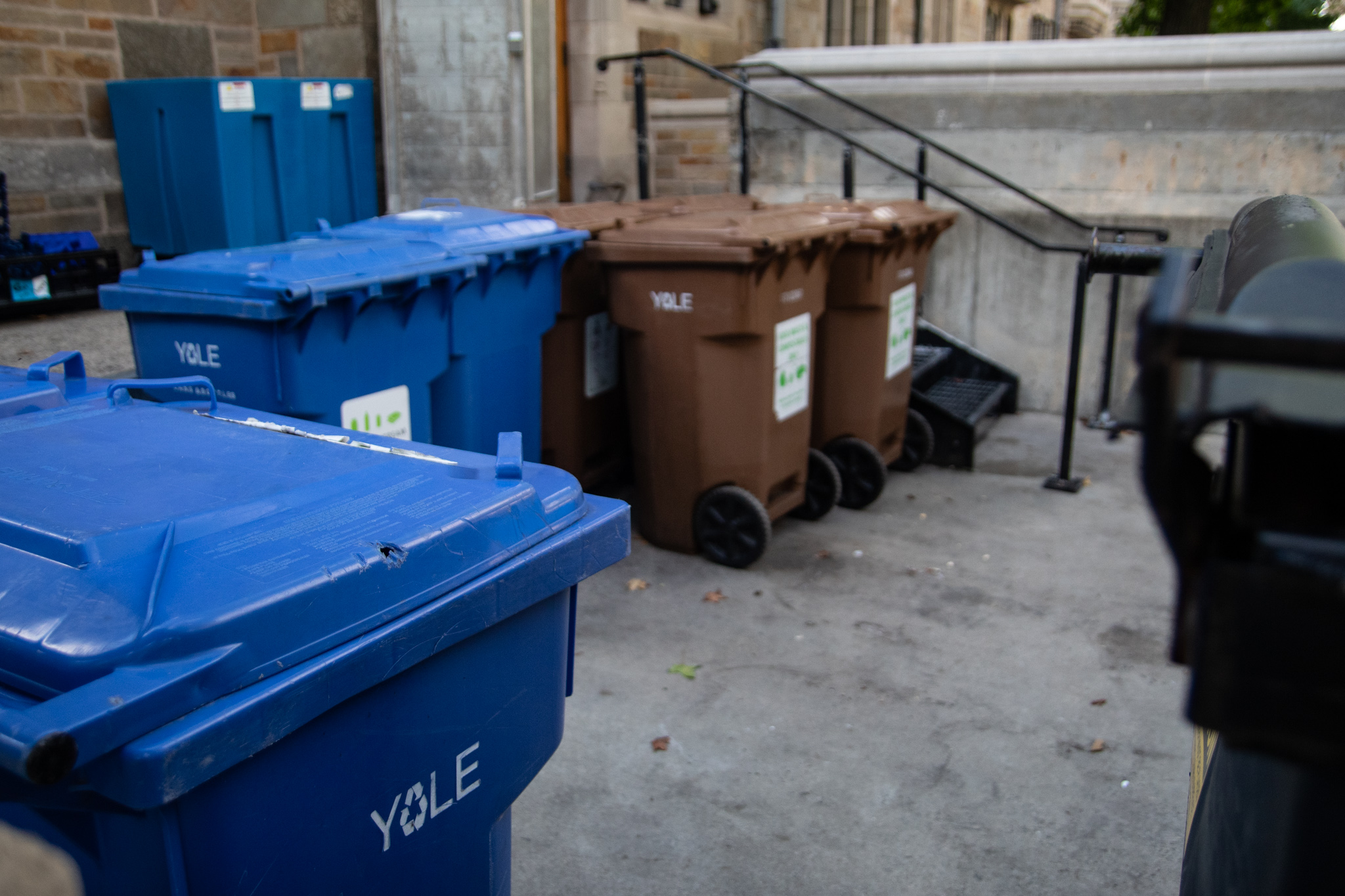New Haveners dump unconventional items at recycling day event
On Saturday, Hometown Recycling Day allowed New Haven residents to bring shredded documents, electronics, mattresses, boxsprings and textiles to be recycled.

Zoe Berg, Senior Photographer
Mattresses, electronics and textiles — items that cannot be included in residents’ curbside recycling bins — were collected for recycling on Saturday at New Haven’s Hometown Recycling Day.
The New Haven Solid Waste and Recycling Authority sponsored the Hometown Recycling Day event for residents to drop off electronics, mattresses, textiles and documents to be shredded. New Haveners were allowed to drop off these items free of charge at Hill Career High School.
“This is the second [Hometown Recycling Day] we’re doing this year in response to the [demand from residents]” Lori Vitagliano, executive director of the NHSWRA, told the News. “Those items that we’re accepting, they can bring to the Transfer Station, but we’re essentially going into the community for the textiles, electronics, mattresses and shredding.”
Usually, residents must take these items to the New Haven Transfer Station if they want to recycle them. To do so, they must pick up a coupon from the city Residential Services Office and then take their residential waste to the Transfer Station for drop off. The Transfer Station only accepts waste drop-offs from residents Monday through Saturday from 9:00 a.m. to 12:00 p.m.
However, the Transfer Station does not accept shredding, nor can residents put shredded documents in their curbside recycling bins. According to Vitagliano, Hometown Recycling Day gives residents an additional resource to keep their materials safe while also responsibly recycling them.
“Shredded paper is recyclable, but not in the typical fashion that you put in the curbside because the state material recovery facilities that deal with this stuff cannot handle shredded paper,” Jeffrey Simon, the materials management coordinator at NHSWRA, explained. “There are facilities that do handle [shredded paper] way up in the northern part of the state, but they’re not easy to get to and you waste more gas and hydrocarbon trying to drive it there.”
According to Simon, residents can either put shredded paper in their trash or wait for collection events like Hometown Recycling Day. He said that a lot of residents like to recycle their shreddings at these events.
If residents do end up leaving household items on the side of the street or behind their homes instead of taking them to the Transfer Station or collection events, the Livable City Initiative or Public Works will take care of the items. According to Simon, most of these items will end up being taken to the Transfer Station and, from there, taken to a recycling facility.
Laura Cahn, chair of the Environmental Advisory Council, said that the recycling system in New Haven makes it very difficult for residents to recycle most of their waste.
“There aren’t enough receptacles to separate things into,” Cahn said. “We don’t even have textile recycling!”
Cahn also pointed out that residents must have a car to drive their residential waste to a collection event or to the Transfer Station, which makes recycling these large items inaccessible for many New Haveners.
The NHSWRA also advertised Hometown Recycling Day as a chance for New Haven residents to learn about better sustainability practices, as well as proper household hazardous waste
disposal and the best practices for curbside recycling.
At Hometown Recycling Day, people were able to learn what they can and cannot put in their curbside recycling bins, how to dispose of various household waste and how to responsibly dispose of paint.
According to the NHSWRA, Americans currently only recycle 12 percent of unused electronics and 15 percent of textiles — such as clothing, shoes, belts, hats and handbags — annually.
Connecticut aims to achieve a 60 percent recovery rate by 2024 for municipal solid waste by implementing waste reduction, reuse, recycling and composting initiatives.







